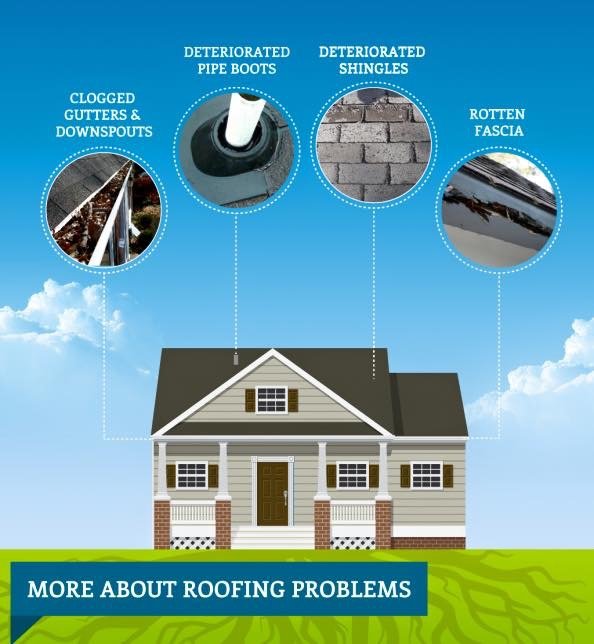Typical Pitfalls In Roof Covering Setup And Ways To Sidestep Them
Typical Pitfalls In Roof Covering Setup And Ways To Sidestep Them
Blog Article
Short Article Created By-Allen Miranda
When you're planning a roof covering setup, it's very easy to neglect vital details that can result in significant problems down the line. You may be tempted to cut edges on material choice or skip proper blinking setup, yet these typical mistakes can bring about costly repairs later on. Understanding the relevance of ventilation and adhering to neighborhood building codes is crucial for an effective task. So, what are the vital actions you should require to ensure your roofing stands the test of time? Let's explore some reliable techniques to prevent these pitfalls.
Poor Product Choice
When it involves roof installation, picking the wrong materials can cause pricey issues down the line. You could assume that any roofing material will certainly do, yet that's an usual misunderstanding. It's vital to pick materials that suit your neighborhood environment and the certain needs of your home.
For example, if you live in an area with hefty rainfall or snow, choosing asphalt shingles may not be the very best selection. Instead, consider more long lasting alternatives like steel or slate.
Furthermore, pay attention to the high quality of the products you're considering. roofer san antonio texas may save you cash upfront, however they usually do not have long life and can lead to frequent repair work or substitutes.
You need to also think about the design of your home and ensure the products you select will keep its visual appeal.
Ultimately, do not fail to remember to talk to specialists. They can supply important understandings and recommend materials that adhere to local building ordinance.
Spending time in proper product selection now can assist you avoid frustrations and expenses in the future, making your roof covering task a success.
Inadequate Flashing Installment
Picking the appropriate products isn't the only element that can cause roof problems; inadequate blinking setup can additionally produce significant issues. Flashing is siding contractors for routing water far from susceptible locations, such as smokeshafts, skylights, and roofing system valleys. If it's not set up properly, you run the risk of water invasion, which can bring about mold and mildew development and structural damage.
When you set up blinking, ensure it's the best kind for your roof covering's design and the regional environment. For example, metal flashing is often a lot more sturdy than plastic in areas with hefty rain or snow. See to it the flashing overlaps suitably and is protected tightly to stop voids where water can permeate through.
You must also pay attention to the installation angle. Blinking ought to be positioned to direct water far from your house, not toward it.
If you're not sure concerning the setup process or the products required, seek advice from a specialist. They can help determine the very best flashing alternatives and make certain whatever is installed properly, safeguarding your home from prospective water damage.
Taking these actions can save you time, money, and migraines down the road.
Neglecting Ventilation Needs
While lots of house owners focus on the visual and structural facets of roof installation, ignoring ventilation requirements can cause major long-term repercussions. Appropriate ventilation is crucial for managing temperature and wetness degrees in your attic room, avoiding problems like mold and mildew growth, timber rot, and ice dams. If you do not mount sufficient air flow, you're setting your roof covering up for failure.
To prevent this mistake, first, analyze your home's certain air flow demands. A balanced system typically includes both intake and exhaust vents to promote airflow. Guarantee you have actually set up soffit vents along the eaves and ridge vents at the optimal of your roof covering. This mix enables hot air to get away while cooler air goes into, maintaining your attic room space comfy.
Likewise, consider the kind of roof covering material you've picked. Some products might require additional ventilation techniques. Ascertain your neighborhood building regulations for ventilation standards, as they can differ substantially.
Ultimately, do not fail to remember to evaluate your air flow system on a regular basis. Blockages from debris or insulation can restrain air flow, so maintain those vents clear.
Final thought
To conclude, avoiding typical roof installment blunders is crucial to ensuring your roofing system's durability and performance. By selecting the best products for your climate, mounting flashing effectively, and addressing ventilation needs, you can prevent costly issues later on. Don't fail to remember to familiarize on your own with neighborhood building regulations and timetable routine inspections. With these steps, you'll enjoy a secure, long lasting roof that protects your home for several years ahead. Happy roof!
